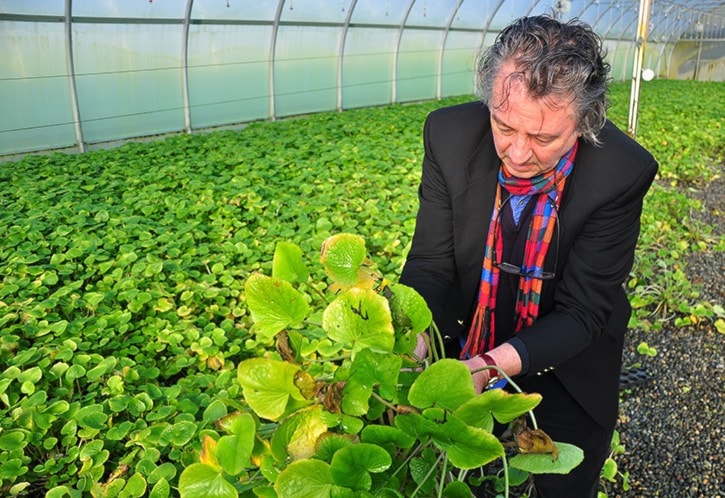Just beside Saseenos Elementary School there are three medium-sized greenhouses, and inside, something unique happens: simulating the environment of a Japanese mountain.
The reason? Wasabi. And lots of it. Now, you no longer need to run into Victoria to buy some painted horseradish goop, you can get the real deal in Sooke.
After years of planning and development, the wasabi farm is the T’Sou-ke Nation’s second initiative towards self-sustainability and renewable resources. The first is is its successful solar projects.
Each greenhouse can grow up to 5,000 wasabi plants at a time, producing around 80 kilograms per month. Sooke is among the few growing wasabi – there are 10 other communities throughout B.C.
“It’s got a high-dollar return of all the vegetables around, and there aren’t a whole lot of people growing wasabi right now, so there’s a good market,” said T’Sou-ke Coun. Colleen George, who is overseeing the project.
Even though the operation is still young, it already serves clients around the world. Just recently, the T’Sou-ke made wasabi shipments to Vienna, Frankfurt, London and Taiwan.
And it moves around pretty quick, said Andrew Moore, head of maintenance and projects for the T’Sou-ke Nation.
This year most of the wasabi harvest will go to culinary uses, while next year all of it will be going towards therapeutic and medicinal purposes, including pills for allergies.
Success of the wasabi here has spread beyond Sooke’s own borders, already attracting hundreds of customers worldwide.
“This is eco-tourism,” said Andrew Moore, head of maintenance and projects for the T’Sou-ke Nation, adding the wasabi farm is an ideal example of the community having a collective vision towards one goal.
The wasabi farm employs around four people to help run its operation.
“We’re going to make sure that the business plan is actually working out and that the figures are coming out well,” Moore said.
“We hope to create a combination of renewables and conservation.”
